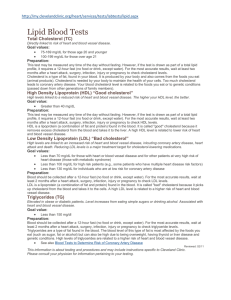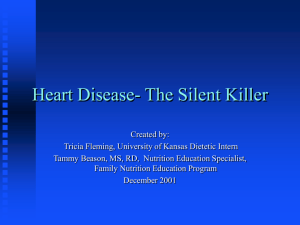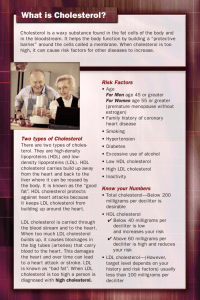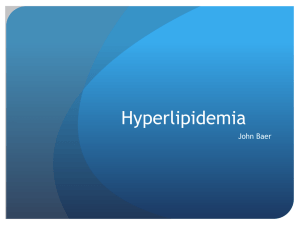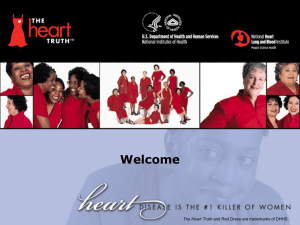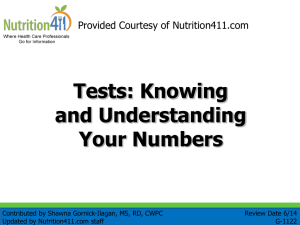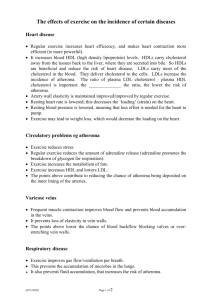Understanding Your Results
advertisement
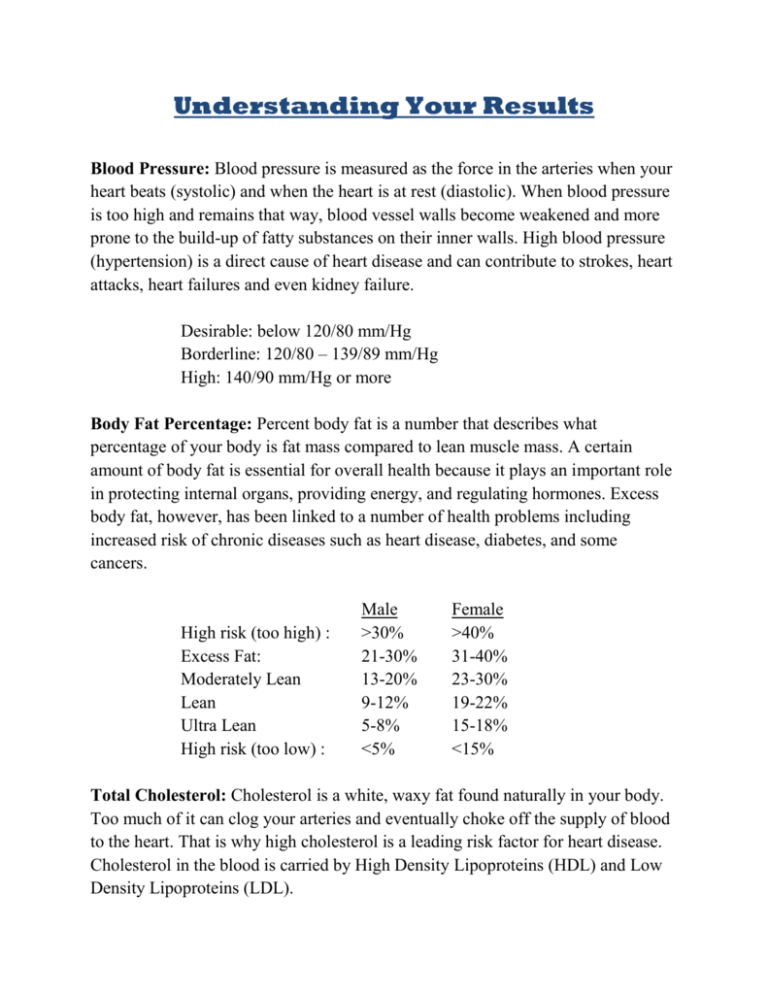
Understanding Your Results Blood Pressure: Blood pressure is measured as the force in the arteries when your heart beats (systolic) and when the heart is at rest (diastolic). When blood pressure is too high and remains that way, blood vessel walls become weakened and more prone to the build-up of fatty substances on their inner walls. High blood pressure (hypertension) is a direct cause of heart disease and can contribute to strokes, heart attacks, heart failures and even kidney failure. Desirable: below 120/80 mm/Hg Borderline: 120/80 – 139/89 mm/Hg High: 140/90 mm/Hg or more Body Fat Percentage: Percent body fat is a number that describes what percentage of your body is fat mass compared to lean muscle mass. A certain amount of body fat is essential for overall health because it plays an important role in protecting internal organs, providing energy, and regulating hormones. Excess body fat, however, has been linked to a number of health problems including increased risk of chronic diseases such as heart disease, diabetes, and some cancers. High risk (too high) : Excess Fat: Moderately Lean Lean Ultra Lean High risk (too low) : Male >30% 21-30% 13-20% 9-12% 5-8% <5% Female >40% 31-40% 23-30% 19-22% 15-18% <15% Total Cholesterol: Cholesterol is a white, waxy fat found naturally in your body. Too much of it can clog your arteries and eventually choke off the supply of blood to the heart. That is why high cholesterol is a leading risk factor for heart disease. Cholesterol in the blood is carried by High Density Lipoproteins (HDL) and Low Density Lipoproteins (LDL). Desirable: 200 mg/dl or less Borderline: 201 to 239 mg/dl High: 240 mg/dl or more HDL (High-Density Lipoprotein): HDL is known as “good” cholesterol because higher levels help protect you against heart disease. HDL cholesterol is involved in getting rid of cholesterol and other fats in your bloodstream. You can raise HDL levels by losing excess weight and exercising regularly. Desirable: 50 mg/dl or more Borderline: 40 to 40 mg/dl Too Low: 39 mg/dl or less LDL (Low-Density Lipoprotein): LDL is known as “bad” cholesterol since higher levels put you at risk for heart disease. This type of cholesterol builds up in the arteries and can contribute to heart attacks and strokes. LDL can be lowered by eating a low fat, low cholesterol, high fiber diet, quitting smoking, losing excess weight, and/or limiting alcohol consumption. Desirable: 100 mg/dl or less Borderline: 101 to 159 mg/dl High: 160 mg/dl or more Triglycerides: Triglycerides are a common form of fat in the bloodstream. A combination of a high triglyceride level with high LDL cholesterol may be a better indicator of heart disease risk than just a high LDL level. Desirable: below 150 mg/dl Borderline: 150 to 199 mg/dl High: above 200 mg/dl TC/HDL Ratio: The total cholesterol/HDL ratio is calculated by dividing total cholesterol by HDL cholesterol. Lower ratios are associated with lower risk for developing heart disease. Desirable: 4.0 or less Borderline: 4.1-6.0 High: above 6.0 Glucose: Diabetes is a disease in which the body does not produce or properly use insulin, a hormone needed to convert sugar, starches and other food into energy. High blood glucose levels can indicate the presence of diabetes or an increased risk of developing diabetes. Ranges below are based on fasting blood tests. Desirable: 70-99 mg/dl Borderline: 100 to 125 mg/dl High: above 125 mg/dl Sources: National Institute of Health & American College of Sports Medicine



